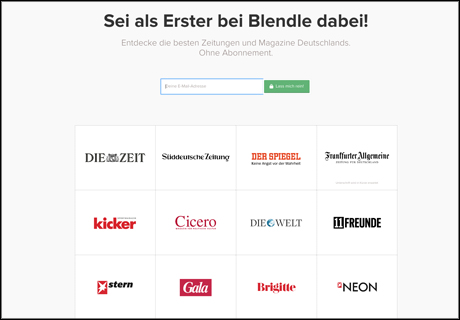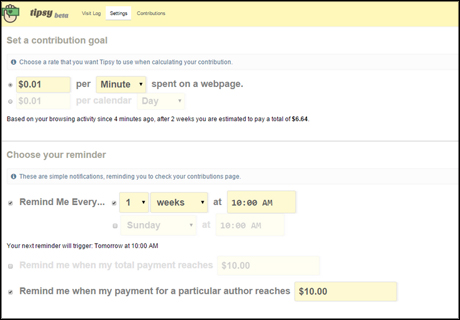
Determining the future of journalism is a pressing issue in the industry, leading to the overarching concern that there isn't a one-size-fits-all model when it comes to funding quality journalism.
News organisations are experimenting with different revenue sources, including events, native advertising, paywalls and micropayments, each with their own advantages and pitfalls.
Here are three micropayment platforms that could be an additional revenue stream for news organisations.The need to click a button every time you want to pay somebody is, to me, a pretty significant obstacleDavid Karger, MIT
Blendle
Micropayments piqued the industry's interest when start up Blendle launched in The Netherlands in April last year, described by its co-founder Alexander Klöpping as the 'iTunes of journalism'.
"The problem is not that people don't want to pay for [journalism], the problem is that it's too hard right now to have a decent micropayment system where it's very easy to pay for articles," argued Klöpping back in September 2014, when the Dutch platform reached more than 100,000 users.
Acknowledging that people may be more open towards paying if they can pay smaller amounts and opt out of bundles in exchange for individual articles from news outlets, Klöpping set up Blendle as a platform where people can 'shop' for articles from a all major Dutch newspapers and magazines for a set price.
Publishers set the cost of their articles, which is generally between €0.10 to €0.30 (£0.08 to £0.24) for newspaper articles and €0.20 to €0.79 (£0.16 to £0.63) for magazines articles and Blendle keeps 30 per cent of the revenue.
The same model will most likely be implemented when the platform becomes available in Germany in September, having signed 39 publications already.

Screenshot from blendle.com/de/, showing a selection of the German publications that will be available from September
Blendle has also attracted interest from global publications like The New York Times, The Economist, The Wall Street Journal and The Washington Post.
While payment for an article on Blendle has to be done before gaining access to the content, the platform does enable users to ask for refunds if they are not satisfied with the quality of the piece.
However, while the main attraction Blendle offers to users is the freedom to mix and match across a variety of titles, rather than purchasing individual subscriptions to each, it remains to be seen if this model can function in countries like the UK or the US.
Tipsy
Tipsy, developed by MIT Professor David Karger, launched last month after receiving funding from the Knight Foundation's Prototype Fund in April 2014.
It has a different approach to micropayments however while it is based on the premise that people should pay for news, it "taps into their altruism" and gives them an option to do this voluntarily.
Professor Karger told Journalism.co.uk that Tipsy, which is a open source browser extension for Chrome, was designed as a "mechanism that would go along with people's willingness to contribute, but remove all the obstacles that would get in their way of doing so".
"The need to click a button every time you want to pay somebody is, to me, a pretty significant obstacle.
"Besides, there is the labour of having to remember to do so and also budgetary issues – you have to keep track of how much you've donated this month, if you want to donate more or if you think that this article you've read is worthy of a donation that adds to what you've already paid."

Screenshot of the Tipsy user settings page, courtesy of MIT
He said Tipsy's model enables the user to decide in advance how much money they want to contribute or "donate" and "does the watching and the calculating for you". How the payment is split between news outlets can also be adjusted by the user.
Monthly payments can be anything from $5 to $100, or even more, and users are not tied to the amount they've set at the beginning of the month, as it can always be increased or decreased based on how much time they've spent on a news website.
"The browser extension looks at all the content that you consume and keeps a record of it, but it's only in your browser," Karger said, "so there are no privacy issues here, we're not sharing that information, collecting or monetising it in any way."
Tipsy is entirely free for news organisations to adopt and it doesn't take any cut of the contributions. If a news outlet wants to try it out, all it has to do is add a 'tipsy.txt' file to their website, generated by Tipsy, which contains a PayPal or Dwolla payment ID to facilitate the payment.
Karger believes the fixed price model, which he called a "beekeeper model", "creates an adversarial relationship between the consumer and the provider". If people can't have something unless they pay for it, they are encouraged to "find ways around these things".
Tipsy is currently being used by a small number of people and news organisations, including US nonprofit news organisation ProPublica, but Karger hopes to sign up more publishers and create a Firefox version of the extension in the near future.
Flattr
Flattr has been around as a micropayment platform since 2010, but it doesn't seem to have gained the attention of many news organisations.
It was originally developed as a button, that works similarly to a Facebook "like", an Instagram "heart" or a YouTube "thumbs up", except when you'd "flattr" a web page that had this button installed, the content creator would be given money.
In order to receive payments, news outlets would have to sign up for free on the Flattr website or embed the button.
However, like Tipsy, Flattr has a Chrome browser extension that people can install if they want to donate, as the button can't be embedded on all sites. Users establish their monthly budget, which can be changed at any time and, at the end of the month, the money is equally divided into the number of "flattrs" a person has made.
Like Blendle, Flattr keeps a cut of the money, set at 10 percent. In a 2013 blog post, Martin Thörnkvist, who was working as a business developer for the platform, explained how it could help news outlets make additional revenue and pointed to Taz.de, a German news outlet that began using Flattr and reportedly made more than €6,000 from micropayments in 2014.
While Tipsy and Flattr both appeal to people's desire to voluntarily pay money for news at a rate they can establish, both seem to have been designed with small or medium size news outlets in mind, which can't afford the paywall luxury and could benefit from having micropayments as an additional revenue stream.
For news outlets like The New York Times or The Wall Street Journal, which lock the majority of their content behind a paywall that not everyone can afford to pay, Blendle's approach means the news organisations can still tap into an audience and revenue source one step at a time, rather than losing them altogether.
Free daily newsletter
If you like our news and feature articles, you can sign up to receive our free daily (Mon-Fri) email newsletter (mobile friendly).
Related articles
- How the Financial Times is broadening its portfolio
- Bundling up: The secret to subscriber success
- 'Collaboration over competition' is the way forward for public interest media
- Blendle shuts down micropayment model due to "very limited user base"
- Micropayments on Twitter: good or bad for publisher's business models?









